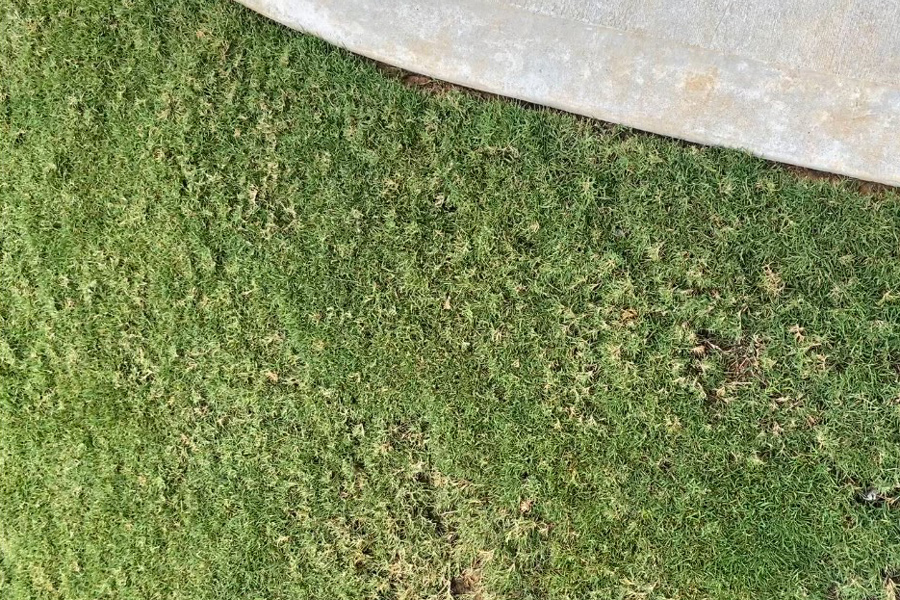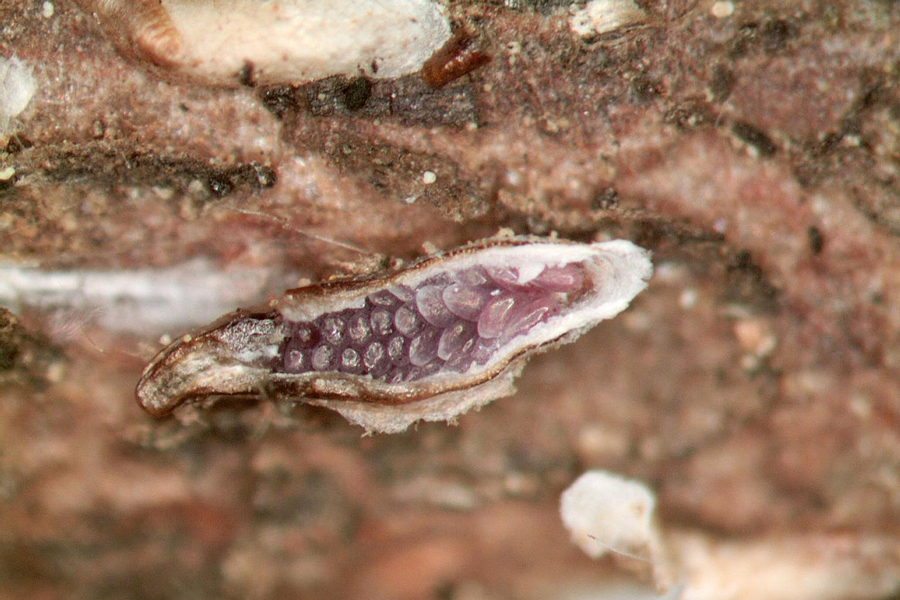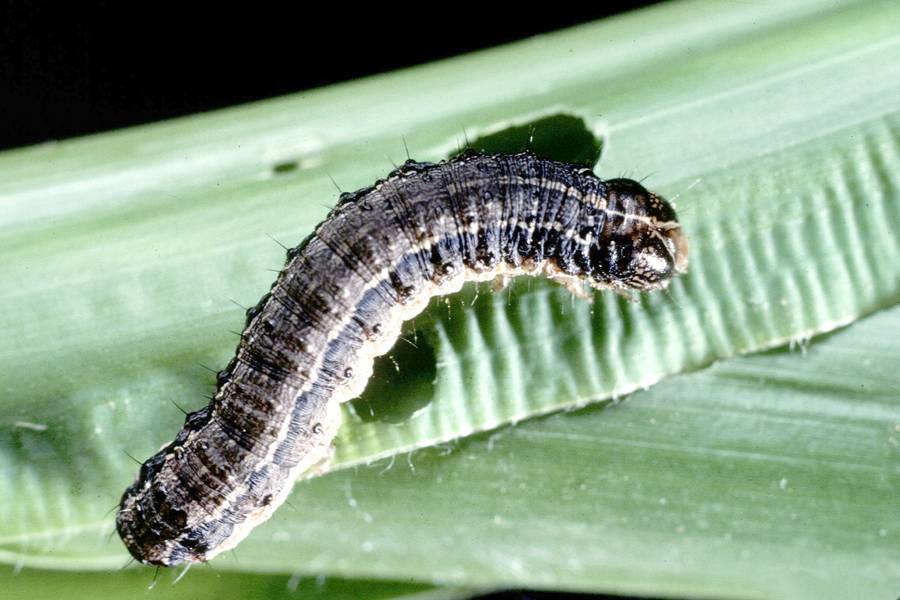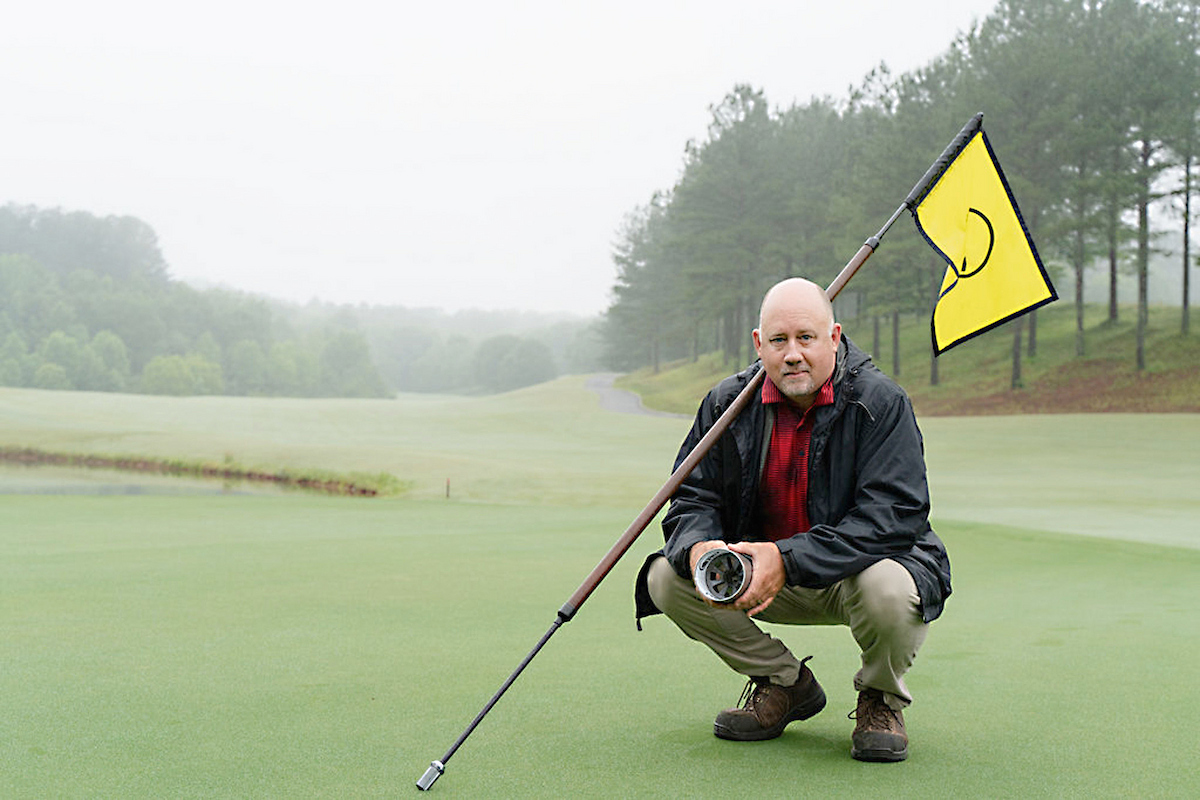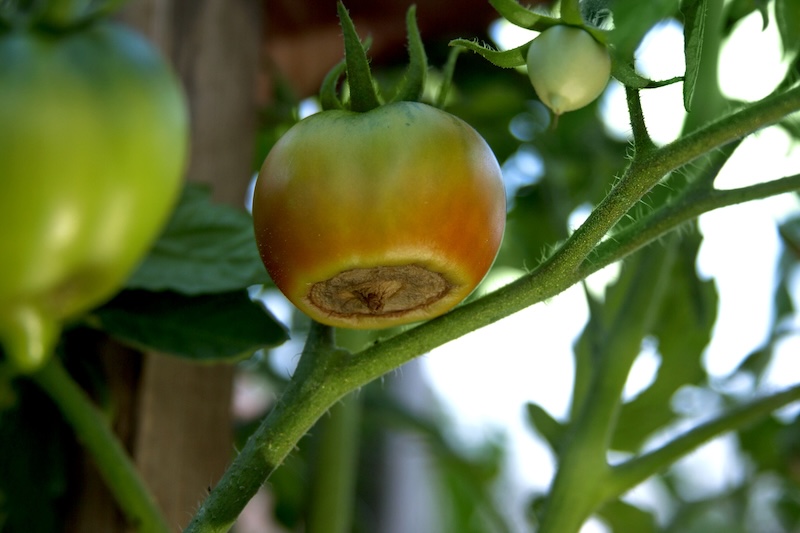Bermudagrass mite (Eriophyes cynodoniensis; Figure 1) is an eriophyid mite species that only infests and feeds on bermudagrass (Cynodon spp.).
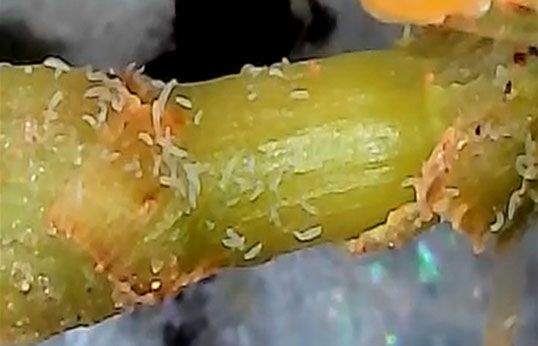
Photo: Stephanie Brooks.
These mites can develop into a serious problem on golf courses, athletic fields, sod farms, and both residential and public lawns. Bermudagrass mite infestations can reduce the aesthetic value of the turfgrass, causing thinning and poor grass growth.
Severe infestations can lead to extensive thinning of bermudagrass, which can cause significant economic losses to golf course superintendents, sod producers, park managers, and homeowners. Over the last few years, bermudagrass mite-induced problems have increased in Georgia. Bermudagrass mites have been reported in about 11 U.S. states.
The size of bermudagrass mites poses a real challenge in identifying and monitoring the population in fields. They hide under leaf sheaths and feed from stems. Generally, eriophyid mites are microscopic, about 0.2 mm (0.0078 in.) long or less.
Unlike spider mites, such as the two-spotted spider mite (Tetranychus urticae), the shape of bermudagrass mites is tubular or an elongated barrel. The spider-like mites are about 1 mm long and can be seen with a hand lens or even without a lens. Refer to UGA Extension publication C 1178, Mite Management in Turfgrass, to see the size difference between a two-spotted spider mite and an eriophyid mite.
Biology and Lifecycle
Life stages of bermudagrass mites are egg, larva, nymph, and adult (Figure 2).
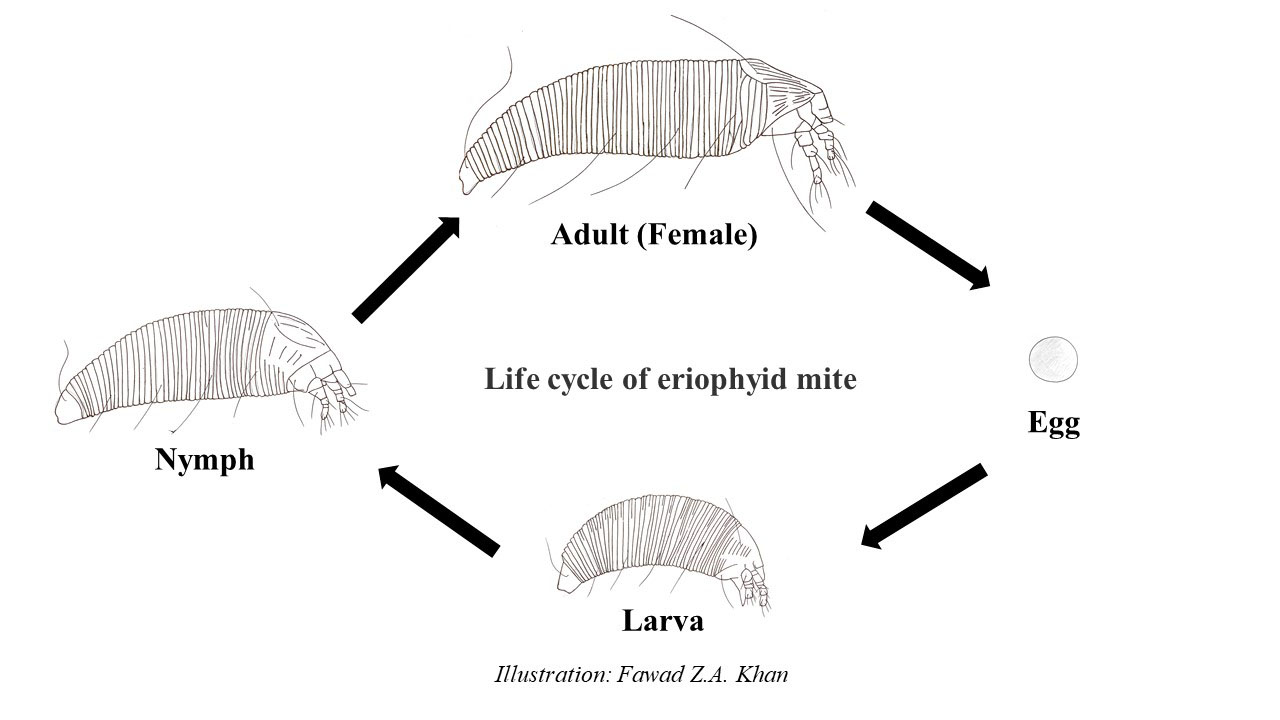
Bermudagrass mites lay eggs under leaf sheaths. Once these eggs hatch, they molt into two immature states before molting into adulthood. Depending on temperature, bermudagrass mites can complete the lifecycle from egg to adult within 5–10 days. In Georgia, bermudagrass mites are active during the growing season. Eriophyid mites are typically dispersed by wind.
Damage
Because mites have piercing and sucking mouthparts, they consume plant fluids after making shallow cuts using their stylets (needle-like mouthparts). Bermudagrass mite feeding triggers the production of witch’s broom (Figures 3 and 4) as the growth of bermudagrass terminals becomes abnormal (Figure 3).
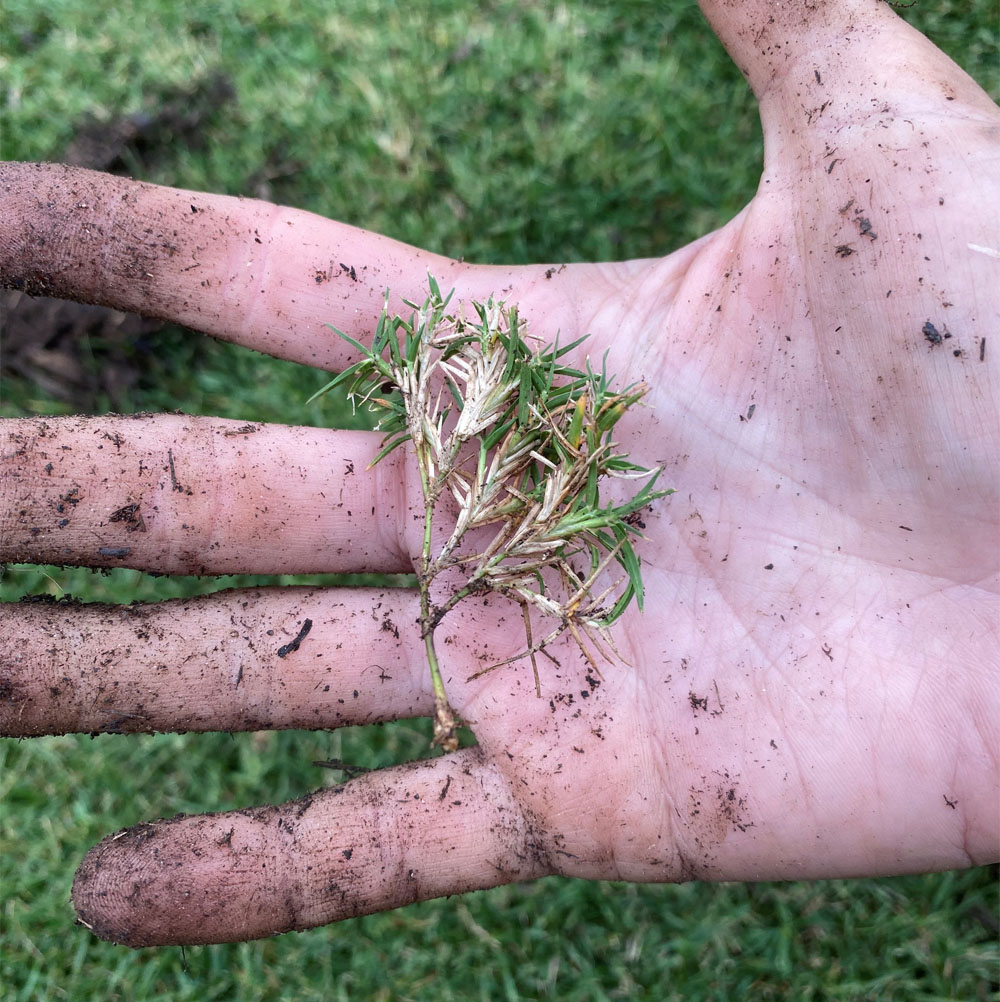
Photo: Stephanie Brooks.
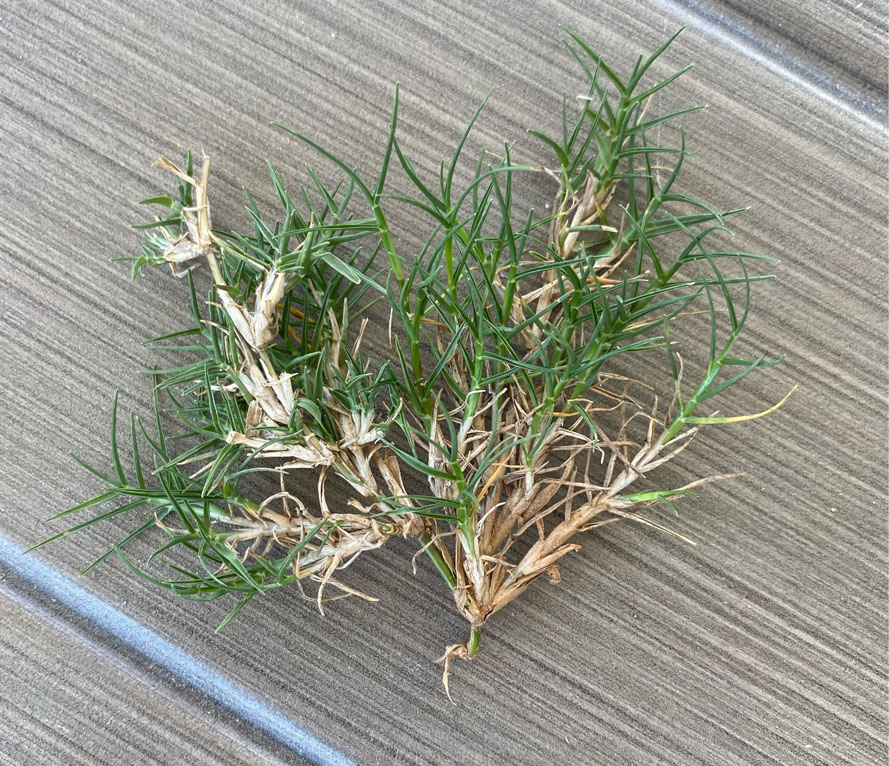
Photo: Stephanie Brooks.
The space between nodes becomes short, and they produce small, narrow, and pointy leaves. More tillers are produced at every node. All these symptoms cause severe stunting of turfgrass. General yellowing of grass blades (chlorosis) is also observed. With excessive witch’s broom and stunting of terminals, bermudagrass becomes thinned in many areas (Figure 5).
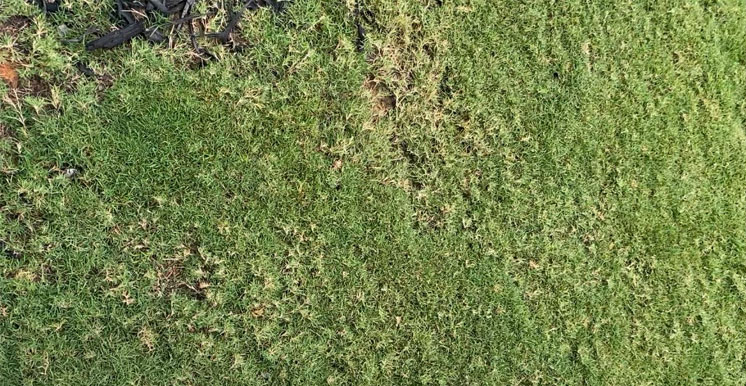
Photo: Stephanie Brooks.
In the spring, the affected turfgrass shows a delay in breaking dormancy and slowing the greening-up process, appearing as if it is affected by drought. The feeding damage is more apparent when bermudagrass greens up in the spring.
Management
Stress is the single most important factor that drives bermudagrass mite infestation. Drought stress, or excessive water deprivation, with foot traffic on turfgrass lead to stress. Proper irrigation and fertilizer applications will help relieve this stress on turfgrass. However, excessive or untimely fertilization can increase the mite population as more nitrogen becomes available to the plant.
Because the aesthetic appearance of turfgrass is front and center for the clientele in most cases, fertilization can help improve the overall appearance of turfgrass, but a balance must be achieved.
Scalping turfgrass by mowing at a low height (about 1 in.) can help remove bermudagrass mites and witch’s broom-affected bermudagrass plant terminals.
Removing bermudagrass clippings from lawns or fields after mowing is a critical management tactic. The mites effectively move from the infested clippings within 2 hr to healthy, noninfested bermudagrass. Thus, removing bermudagrass clippings is critical for mite management, and it can reduce witch’s broom symptoms by at least 65%. The removed clippings should be disposed of well away from noninfested bermudagrass to avoid infestation. Bermudagrass mites can also live in grass clippings that do not show any symptoms of witch’s broom. Removing grass clippings and properly disposing of the turfgrass is a healthy general practice, especially if you do not notice visible signs of bermudagrass mite infestation on the grass.
Pyrethroid insecticides, such as bifenthrin or lambda-cyhalothrin, and combination products that have pyrethroid, such as bifenthrin + imidacloprid + zeta – zeta-cypermethrin, can effectively reduce mite populations. Abamectin products, especially registered for site use, can be employed if necessary. Abamectin is registered for nematode control and is proven to reduce bermudagrass mite infestations.
Carefully read the label instructions before using any insecticide. Spirotetramat is an effective insecticide that has good efficacy on bermudagrass mite management; however, it is not registered for use on turfgrass in Georgia. Check the Kontos label registration status at the Envu webpage (https://www.us.envu.com/turf-and-ornamentals-management/production-ornamentals/products/kontos).
Regardless of the product, applications must start in the spring to target early mite populations and be repeated regularly (every 2 weeks) when mite infestations are severe. It is recommended that a proper surfactant, such as Harrell’s activator + SA (salicylic acid) or nonionic penetrants, be added to a miticide solution in every application to improve penetration of the miticide through gaps between stems and leaf sheaths where the mites feed.
References
Boeri, P. A., Benda, N. D., Unruh, J. B., & Dale, A. G. (2018). Biology and management of the bermudagrass mite, Eriophyes cynodoniensis (Publication No. ENY-342). University of Florida IFAS Extension. https://edis.ifas.ufl.edu/publication/IN1217
Brown, M. S., Blubagh, C. K., & Chong, J. H. (2021). Biology and management of eriophyid mites in turfgrass. Journal of Integrated Pest Management, 12(1), 25. https://doi.org/10.1093/jipm/pmab020
Brown, M. S., & Chong, J. H. (2024). Removing grass clippings reduces bermudagrass mite (Acari: Eriophyidae) infestation during turfgrass regrowth. Experimental and Applied Acarology, 93, 133–140. https://doi.org/10.1007/s10493-024-00911-w
Reinert, J. A., Dudeck, A. E., & Snyder, G. H. (1978). Resistance in bermudagrass to the bermudagrass mite. Environmental Entomology, 7(6), 885–888. https://doi.org/10.1093/ee/7.6.885
Tuttle, D. M. (1984). Evaluation of pesticides on bermudagrass, 1983. Insecticide & Acaricide Tests, 9(1), 349–350. https://doi.org/10.1093/iat/9.1.349
